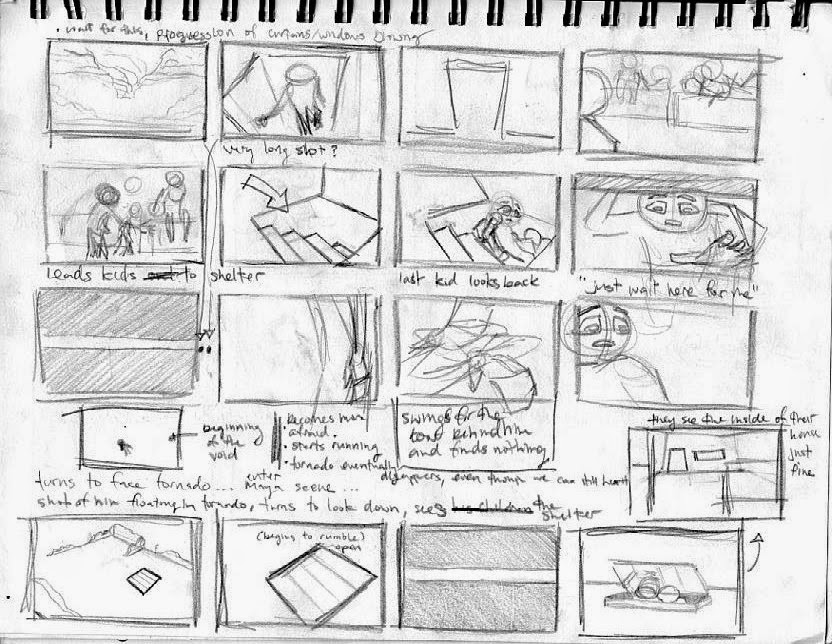
The 1996
blockbuster film, Twister, shows several levels of relevance to my film past
the plot line of confronting a tornado.
The fact that it is a special-effects heavy tornado film did jump start
me into researching important details about tornados, both in its scientific
understanding and in its cinematic representation. Although, Jan de Bont’s film
functions not only as a (then) high-level special effects spectacle, but also
functions on a few levels that has helped me get a better framing about what I
am trying to achieve with my film.
Tornado depictions
in Twister, more specifically the big one at the end, resembled that of an F5
or an EF5 tornado – those of the highest intensity. That is the tornado I have been planning to
portray in my film. I found it helpful seeing
how they decided to portray the tornado compared to the youtube reference
footage I’ve been using to animate. A
notable difference was how debris was handled.
What you can’t see in a lot of reference footage is all of the debris that
is being tossed around the tornado and the hail that precedes it. The attention to detail in the debris is
evident, especially when characters are up close to the tornado. These shots are showing what would be
impossible to capture in an environment that would easily put lives at risk in
order to capture it. These are important
details that help strengthen this film and it is because of this, amongst
several more layers, that I was able to relate to my current pursuit.
The film positions
itself to revolve around Helen Hunt’s character, Jo Harding, and her ex-husband
trying to resolve what tension they have left from their failed marriage. This brings up a relationship issue that
persists through the chase with the tornado.
Interpersonal tension is what I am aiming to create through the
relationship between the father and son in my film. In Twister, the two characters face a series
of tornados which seem to reignite the bond they both seemed to let go of. This is a resolution I am aiming to create in
bringing the father and son together at the end. What lines up more so with my film and
Twister is past the obvious confrontation with the tornado which I feel serves
as a tool to describe the real matter at hand.
In the later parts of the film I was slowly coming to the realization as
to what Helen Hunt’s true purpose in the film was – what she was really after. As the film progressed, I felt I understood
her purpose, but it became completely clear with one of the last few shots.
Jo Harding and her
ex-husband face the tornado one last time, waists tied down to a pipe and
holding on for their lives. This scene is their last confrontation with a tornado
and is the biggest confrontation they’ve had – this time seeing the eye of the
tornado. Immediately after this scene,
in which they survive, we cut to a shot of an underground bunker door opening
up with a surviving family being revealed.
Coming out first is a father holding his young daughter in his arm. Jo Harding’s purpose this whole movie has
really been about her trying to impossibly fix her past – and this shot is the
confirmation needed to show that she just has.
Fixing her traumatic past is the true motivation for chasing tornadoes
and also the cause for her failed marriage, which had been exposed earlier in
the movie. With my film I am aiming to
create what would seem to be a truer cause for the farmer and his trials – it
is his depression and desire to leave forever.
Of course, like Twister, my protagonist’s innermost desire must have its
resolution.
Functioning
as a landmark film in special effects with the subject matter revolving around
tornadoes, this film proves its reliability towards understanding the types of
film conventions that are in play when portraying a tornado on screen. Not only on that level but upon focusing on
the character, there are several more levels within the story that describe the
conflicts that Jo Harding and my farmer face.
A combination of all of these factors makes for a quality comparison for
evaluation, especially being in a phase where there are parts of the plot I
have yet to decide upon – conflicts to be made evident and worth pursuing.





















